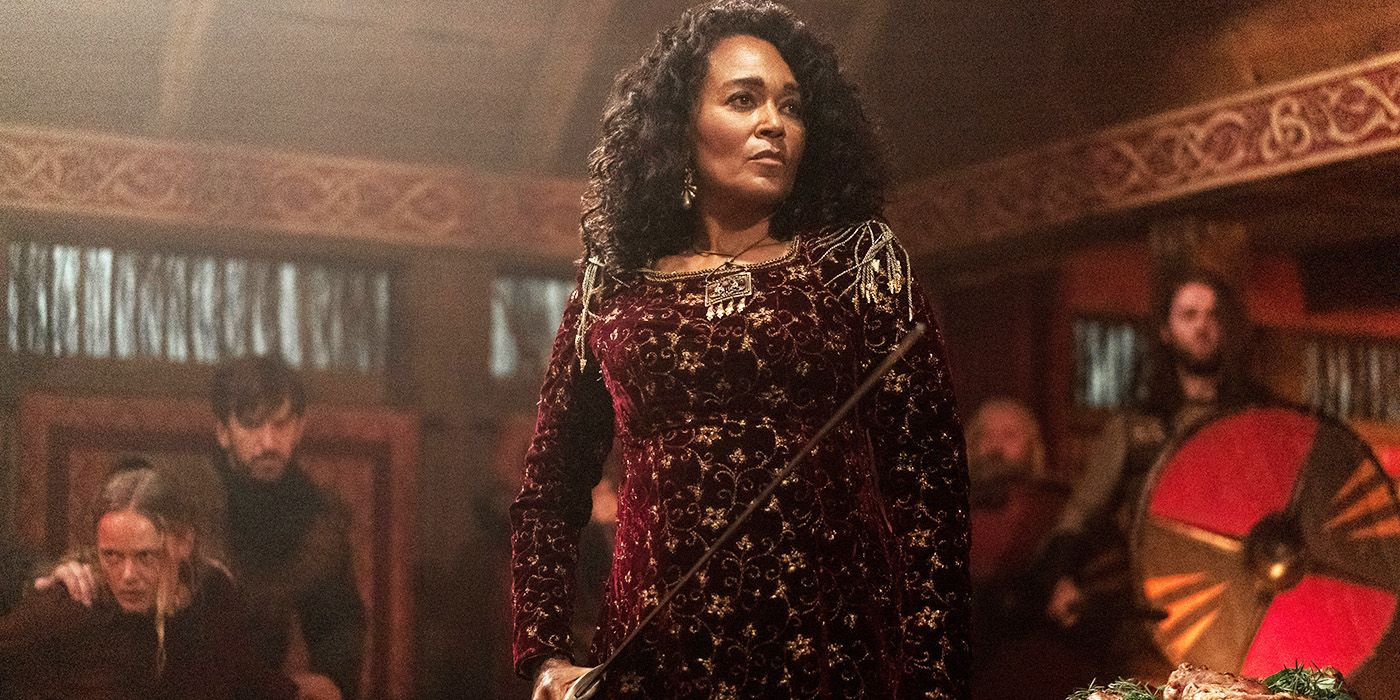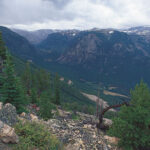For fans captivated by the epic sagas of Vikings and its sequel Vikings: Valhalla, Kattegat stands as a central and iconic location. This bustling town, home to legendary figures like Ragnar Lothbrok and later ruled by the powerful Jarl Haakon, plays a pivotal role in both series. However, for viewers drawn into the rich tapestry of Norse mythology and history presented in these shows, a question often arises: is Kattegat a real place, or purely a creation for the screen? This article delves into the fascinating truth behind Kattegat, exploring its fictional portrayal in Vikings and Valhalla and uncovering the real-world inspiration for this pivotal location.
Kattegat in Vikings: A Fictional Town in Norway
In the world of Vikings, Kattegat is depicted as a significant and thriving town nestled in Norway. From the very first season, it serves as the home base for Ragnar Lothbrok and his family, witnessing his rise from farmer to Earl and eventually King. Kattegat is portrayed as a coastal settlement, vital for Viking raids and trade, and remains a consistently important location throughout the six seasons of Vikings and into Vikings: Valhalla, set a century later. It’s a place of humble beginnings that evolves into a major Scandinavian power center.
The Real Kattegat: A Sea Between Denmark, Norway, and Sweden
While Vikings portrays Kattegat as a town, the reality is quite different. Kattegat is indeed a real geographical location, but not a city. It is actually a sea area situated between Denmark, Norway, and Sweden. This expansive body of water is bordered by the Jutland Peninsula (part of Denmark and Germany) to the west, the Danish Straits islands to the south, and the Swedish regions of Västergötland, Scania, Halland, and Bohuslän to the east.
Navigating the Kattegat sea can be treacherous due to its shallow waters, numerous reefs, and strong currents. This challenging maritime environment is subtly referenced in Vikings: Valhalla when Leif Eriksson and Freydis Eriksdotter undertake their voyage to Kattegat, highlighting the inherent risks of sea travel in this region. The real Kattegat is a substantial sea area, covering approximately 12,000 square miles and surrounded by significant port cities such as Gothenburg, Aarhus, Aalborg, Halmstad, and Frederikshavn, underscoring its historical and contemporary importance in Scandinavian trade and travel.
Lough Tay, Ireland: The Filming Location for Kattegat
The visually stunning Kattegat seen in both Vikings and Vikings: Valhalla is not actually filmed in Scandinavia. Instead, the production team chose the picturesque landscapes of Lough Tay, located in County Wicklow, Ireland, as the primary filming location for Kattegat. This location, with its dark, Guinness-colored lake and surrounding mountains, provided the dramatic and evocative backdrop that the creators envisioned for the Viking settlement. The choice of Lough Tay effectively captures the atmosphere of a rugged, coastal Viking town, even though it is geographically distant from the real Kattegat sea area. Vikings: Valhalla continued to utilize Lough Tay, maintaining visual consistency despite the narrative time jump and changes within the fictional Kattegat.
Ragnar Lothbrok and Kattegat: Separating Fact from Fiction
In Vikings, Ragnar Lothbrok is firmly established as hailing from Kattegat, Norway. However, when we delve into historical accounts of the legendary Viking figure Ragnar Lothbrok, the picture becomes less clear. Historical records do not definitively link Ragnar Lothbrok to Kattegat or any specific Norwegian town. In fact, the very existence of Ragnar Lothbrok as a single, historically accurate individual is debated among historians.
Viking society did not rely on written records in the same way as other cultures of the time, making precise historical accounts of figures like Ragnar scarce. Legends surrounding Ragnar, such as those found in The Saga of Ragnar Lothbrok, often blend fantastical elements, like dragon slaying, with potential historical kernels. It is more likely that the figure of Ragnar Lothbrok is an amalgamation of various historical Viking leaders and figures, including King Horik I of Denmark, King Reginfrid, and the Viking leader Reginherus who famously besieged Paris in 845 AD. Therefore, while Vikings places Ragnar firmly in Kattegat, history offers no such definitive origin, leaving his true beginnings shrouded in the mists of time and legend.
Jarl Haakon of Kattegat: A Blend of Fiction and Inspiration
Vikings: Valhalla introduces Jarl Haakon as the ruler of Kattegat, a powerful and progressive leader. Notably, Jarl Haakon is portrayed as a Black woman, marking a significant and inclusive representation within the Vikings universe. But was there a historical Jarl Haakon who ruled Kattegat? The character of Jarl Haakon in Vikings: Valhalla is largely fictional, with no direct historical evidence of a female Viking ruler named Haakon governing Kattegat. While Viking society afforded women more rights and respect compared to many contemporary cultures, the notion of a female Jarl is not supported by historical records.
However, the name “Haakon” itself is historically significant in Norse history. It is likely that the creators of Vikings: Valhalla drew inspiration from Haakon Sigurdsson, a powerful ruler of Norway in the late 10th century. While Haakon Sigurdsson’s rule was over Norway and not specifically Kattegat (as Kattegat was not a city to be ruled), the name and the concept of a strong Norse leader named Haakon likely served as a basis for the character. Jarl Haakon, therefore, represents a blend of fictional narrative and loose historical inspiration, adding depth and intrigue to the Vikings: Valhalla storyline.
 Jarl Haakon in Vikings Valhalla standing in Kattegat
Jarl Haakon in Vikings Valhalla standing in Kattegat
Real vs. Fictional Locations in Vikings Universe
Interestingly, while Kattegat itself is fictionalized as a town, most other locations featured in both Vikings and Vikings: Valhalla are indeed real places. Major cities like London, Paris, and Constantinople (modern-day Istanbul) appear in the narratives and retain their historical significance. Even regions and kingdoms such as Mercia and Uppsala are based on real historical entities. In fact, Kattegat stands out as somewhat of an anomaly in the Vikings universe, being the primary location that is a significant departure from geographical reality.
One other location in Vikings: Valhalla that treads the line between legend and reality is Jomsborg, the stronghold of the Jomsvikings. While Jomsborg is mentioned in Viking sagas, its precise location remains debated, and some historians even question its actual existence. Despite this uncertainty, Jomsborg, if it existed, is considered to be more rooted in potential historical reality than the fictional town of Kattegat. This contrast highlights the show’s creative approach, blending real historical settings with fictionalized locations to craft its compelling narratives.
Conclusion
In conclusion, while Kattegat is a cornerstone location in Vikings and Vikings: Valhalla, it’s crucial to understand that the town depicted in the series is a fictional creation. The name “Kattegat” is borrowed from a real geographical area – the sea between Denmark, Norway, and Sweden – but the bustling Viking town is a product of creative storytelling. This fictional Kattegat, filmed in the stunning landscapes of Ireland, serves as a powerful stage for the dramas, conquests, and transformations of the characters within the Vikings universe, beautifully blending historical inspiration with narrative license.

